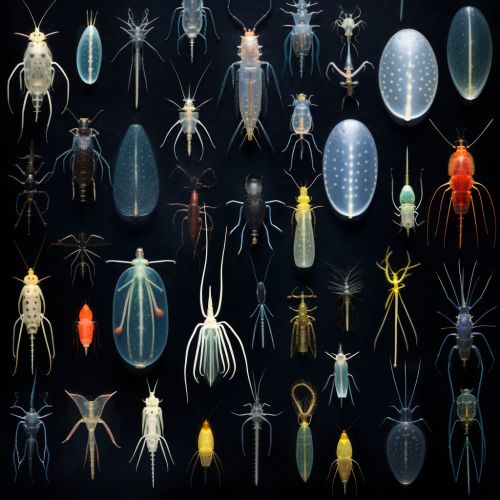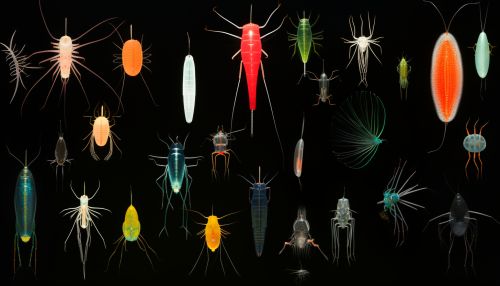Zooplankton
Overview
Zooplankton are a diverse group of small, often microscopic animals that live in bodies of water. They are a crucial component of aquatic ecosystems, serving as a primary food source for many larger aquatic organisms and playing a key role in the transfer of energy within food webs. Zooplankton include a wide range of organisms, from single-celled protozoans to small crustaceans and jellyfish.
Classification
Zooplankton are classified into three main groups: protozoan zooplankton, metazoan zooplankton, and ichthyoplankton. Protozoan zooplankton are single-celled organisms that feed on bacteria and other microscopic food particles. Metazoan zooplankton are multicellular animals, which include small crustaceans like copepods and cladocerans, as well as jellyfish and other gelatinous creatures. Ichthyoplankton are the eggs and larvae of fish.


Distribution and Habitat
Zooplankton are found in all types of water bodies, from freshwater ponds and streams to the open ocean. Their distribution within these habitats can vary greatly depending on factors such as temperature, salinity, light availability, and food supply. Many zooplankton species perform daily vertical migrations, moving up towards the water surface at night to feed and retreating to deeper waters during the day to avoid predators.
Life Cycle
The life cycle of zooplankton varies widely among species. Some, like many protozoans, reproduce asexually through binary fission. Others, like most metazoans, have complex life cycles involving both sexual and asexual reproduction. Many zooplankton species produce resting eggs that can survive harsh environmental conditions and hatch when conditions improve.
Role in Ecosystem
Zooplankton play a critical role in aquatic ecosystems. They serve as a primary food source for many larger animals, including fish, birds, and marine mammals. By feeding on phytoplankton and other microscopic organisms, zooplankton help to control algal blooms and maintain water quality. They also play a key role in the carbon cycle, as they consume carbon-dioxide-absorbing phytoplankton and release carbon dioxide through respiration.
Research and Monitoring
Zooplankton are often used as indicators of environmental change and water quality in aquatic ecosystems. Changes in zooplankton communities can signal shifts in nutrient levels, temperature, and other environmental factors. Scientists use a variety of methods to study and monitor zooplankton, including net sampling, acoustic surveys, and microscopic examination.
Threats and Conservation
Zooplankton face a variety of threats, including pollution, habitat loss, climate change, and overfishing. These threats can lead to changes in zooplankton communities, which can have cascading effects on aquatic food webs and ecosystem health. Conservation efforts for zooplankton generally focus on protecting aquatic habitats and managing human activities that impact water quality.
